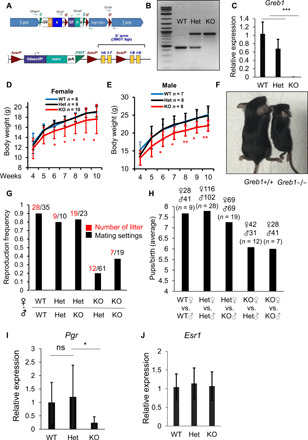Fig. 6. Greb1 KO reduces growth and fertility in female mice.

(A) Schematic presentation of the generation of Greb1-KO mice by inserting a trapping cassette “SA-βgeo-pA” upstream exons 16 and 17 of Greb1 and corresponding allele expressing GREB1-WT when the trapping cassette is removed by Flp-recombinase targeting FRT sites flanking the SA-βgeo-pA cassette. (B) Representative genotyping for WT, Het, and Greb1-KO mice by PCR. (C) Mouse ovaries were harvested from WT, Het, or Greb1-KO mice. mRNA level of Greb1 was evaluated by qRT-PCR. n = 3, ***P < 0.001 by t test. (D) Body weight (in grams) of WT or Greb1-KO female mice. *P < 0.05 and **P < 0.01 by t test. (E) Body weight (in grams) of WT or Greb1-KO male mice. (F) Representative photo image of age-matched WT and Greb1-KO female mice at 25 days. Photo credit: Chia Yi Liu, Institute of Molecular and Cell Biology, A*STAR. (G and H) A total of six rounds of mattings were performed with multiple mating cages, one male and two female mice per mating cage, for each pairing consisting of indicated genotypes. In different mating combinations of WT, Het, and Greb1-KO mice, the frequency of conceptions was calculated as the ratio between the number of litter conceived per number of mating cages (G), and the average number of pups per litter from different mating settings of WT and Greb1-KO mice was calculated (H). (I) Ovary samples from WT, Het, and Greb1-KO mice were collected and analyzed for mouse progesterone receptor (Pgr) expression at mRNA levels. (J) Ovary samples from WT, Het, and Greb1-KO mice were collected and analyzed for mouse estrogen receptor α (Esr1) expression at mRNA levels. n = 3, *P < 0.05 by t test.
